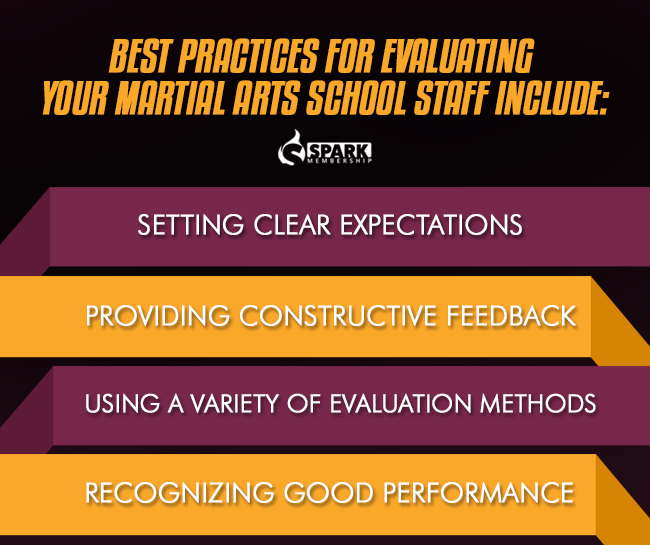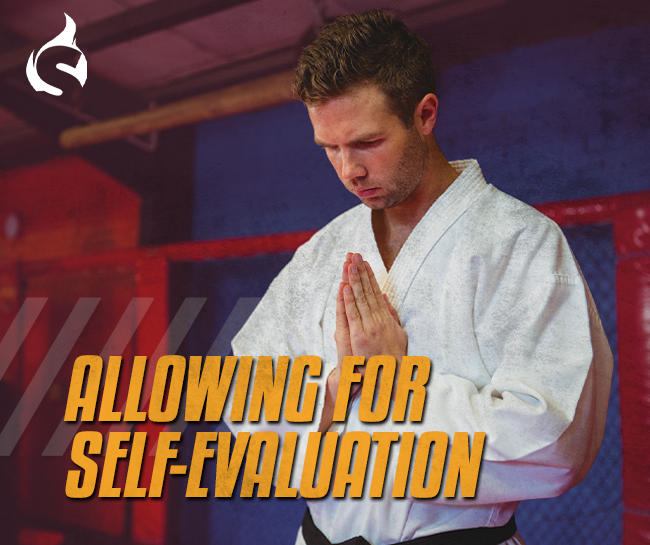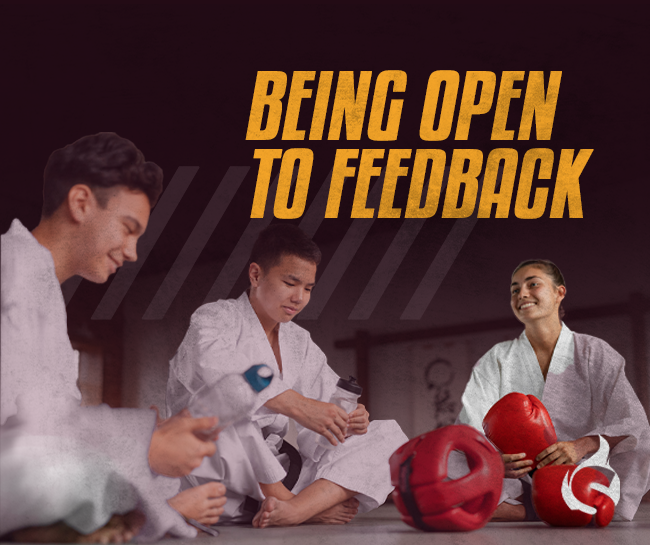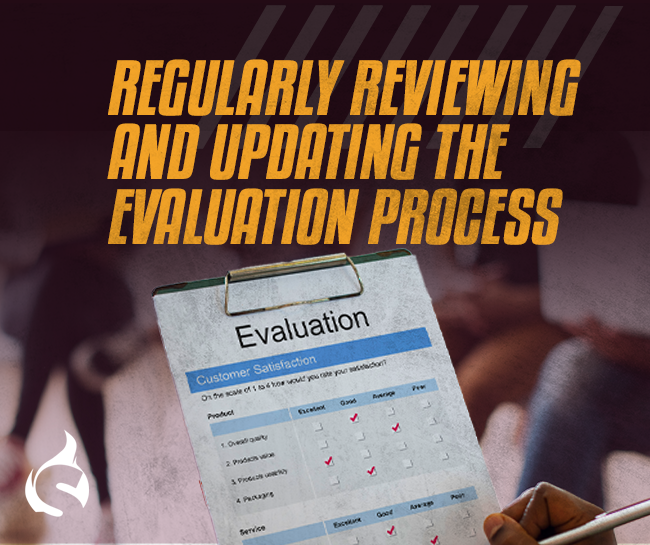
When it comes to evaluating the staff at your martial arts school, there are a few best practices to keep in mind to ensure that you’re getting an accurate assessment of their performance. At the same time, there are also common pitfalls that you’ll want to avoid to make sure that your evaluations are fair and effective.
Best Practices for Evaluating Your Martial Arts School Staff Include:

- Setting clear expectations:
Before you start evaluating your staff, make sure that you have clearly communicated your expectations for their performance. This might include specific teaching techniques, communication skills, or student retention goals.
- Using a variety of evaluation methods:
Don’t rely solely on one method of evaluation. Instead, use a combination of methods such as student feedback, direct observation, and performance metrics to get a well-rounded view of your staff’s performance.
- Providing constructive feedback
When providing feedback, focus on specific areas for improvement and provide actionable suggestions for how to improve. Avoid criticism that is overly negative or generalized.
- Recognizing good performance:
Make sure to also recognize and praise good performance when you see it. This can be a powerful motivator for staff to continue to improve.
Common Pitfalls to Avoid When Evaluating Your Staff Include:
- Biases and assumptions

Be aware of any biases or assumptions you might have about your staff members that could influence your evaluation. For example, don’t assume that a staff member who is outgoing and personable is necessarily a better teacher than someone who is quieter and more reserved.
💡 Biases and assumptions are like blindfolds, they obscure our vision and hinder our ability to see the truth. When evaluating your martial arts school staff, it’s essential to remove these blindfolds and approach the process with an open mind and a willingness to challenge preconceived notions.
- Lack of consistency

Be consistent in how you evaluate all staff members. This will help ensure that your evaluations are fair and accurate.
- Focusing solely on weaknesses

While it’s important to identify areas for improvement, don’t focus solely on weaknesses. Make sure to also recognize and build on staff members’ strengths.
💡 Focusing solely on weaknesses can blind us to the strengths that are already present. It’s important to evaluate with a balanced perspective in order to cultivate a thriving martial arts school staff.
- Lack of Transparency

Make sure that staff members are aware of the evaluation process and understand how they are being evaluated. This will help them feel more invested in the process and be more receptive to feedback.
- Setting specific goals

In addition to setting clear expectations, it’s important to set specific goals for your staff members. These goals should be achievable and measurable so that progress can be tracked and evaluated over time.
- Allowing for self-evaluation

Encourage staff members to evaluate themselves and reflect on their own performance. This can help them identify areas for improvement and take ownership of their own growth.
💡 True growth in martial arts comes not only from evaluating the techniques we learn, but also from allowing ourselves to evaluate the people who teach us. Embrace self-evaluation as a crucial tool for improving your martial arts school staff.
- Providing opportunities for professional development

Offer opportunities for staff members to continue their education and develop new skills. This can help keep them engaged and motivated and also benefit your school by bringing in new ideas and techniques.
- Being open to feedback

Don’t just give feedback to your staff members, but also be open to receiving feedback from them. This can help you identify areas where you can improve as a leader and make your evaluations more effective.
- Regularly reviewing and updating the evaluation process

The evaluation process should be reviewed and updated regularly to ensure that it remains effective and relevant to the needs of your school and staff members.
Evaluating your martial arts school staff is an important process that can help improve the quality of instruction and overall performance of your school. By following best practices and avoiding common pitfalls, you can ensure that your evaluations are fair, accurate, and effective in helping your staff members grow and improve.
Read “Membership Retention: The Key to Success for Crossfit Gym Owners” to build a loyal team passionate about your school’s mission and goals.
Try Spark Membership Software to streamline your operations, manage your memberships, and grow your martial arts school.





